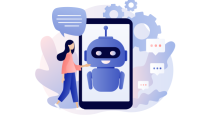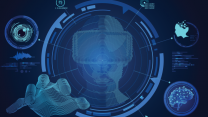In recent years, advancements in artificial intelligence (AI) models have revolutionized business intelligence. Modern businesses are built on data-driven decisions, and to leverage the value contained in data without sacrificing human resources, more and more companies are bringing AI into their workflows.
By learning from continuous data input and mimicking human behavior, AI tools are extremely trainable, adaptive, and scalable. Various tools and solutions have emerged for this sole purpose, using data on customers, employees, operations, finance, and more to help companies understand, process, interpret, and decide how to work with it.
Here are 6 ways artificial intelligence can help you make those decisions.
[ Check out our primer on 10 key artificial intelligence terms for IT and business leaders: Cheat sheet: AI glossary. ]
1. Increasing speed and efficiency
AI algorithms can process and analyze large amounts of data in a relatively short time and thus can be trained or used to create tools for quick and efficient decision-making.
Instead of manually evaluating data, AI can quickly and accurately analyze and compare datasets for the desired output, saving businesses time and resources while helping them make more informed decisions. Tools like ChatGPT are already being employed in companies and for mainstream use to speed up processes like content and copywriting.
2. Automating workflows
AI automation can perform routine tasks based on structured data, reducing time spent on administrative work and enabling employees and leadership to focus on more relevant decision-making.
[ Related reading: How artificial intelligence can inform decision-making. ]
When structured work is delegated to AI-automated workflows, end-to-end testing can be performed, and scheduling becomes an added benefit. It avoids the risks of human error or fatigue.
AI also offers the advantage of learning and adjusting its output based on rules, actions, and triggers. Using AI tools is not just efficient but also scalable, as they can accommodate growing datasets and workflows.
3. Doing complex problem-solving
AI models can make sense of large data sets and spot tendencies and nuances that may be difficult for humans to detect. They can therefore be trained to process information and quickly consider a wide range of variables and factors down to the most granular level possible, something that would take a lot of time and effort if done manually. AI tools have been used to help with tasks from forecasting for finance to anomaly detection in cybersecurity.
4. Removing biases
Human judgment is flawed; even the most skilled specialist's choices and decisions may be skewed by unconscious biases, stress, and even factors like lack of sleep and hunger.
AI can help eliminate these issues by being less prone to cognitive biases and human error. It can also produce outputs that may be unintuitive due to human perceptions based on our subjective opinions and personal worldviews.
In areas like recruitment and HR, where objectivity is crucial but bias and profiling can occur, HR tools that include AI may help overcome human biases and assumptions when selecting candidates.
[ Also read: Generative AI: 3 do's and don'ts for IT leaders ]
5. Predicting outcomes
AI models and algorithms are designed to systematically extract information from data patterns and can be used to forecast new patterns and interpretations. These forecasts can be translated into models and simulations to help users gain better insight into the estimated outcomes. These outcomes can be continually updated and refined as more data is fed to the algorithm.
Companies can then use this information to support decision-making by predicting the outcomes or providing clear recommendations for specific situations or datasets.
For example, AI is now being used to predict things like customer behavior. When it is trained on data from human behavior measures and methods like eye-tracking, some AI applications can now predict user behavior, like attention, on creatives.
6. Understanding customers
AI can help businesses understand their target customers better. Tools that adapt to dynamic customer behavior and intention can help companies understand the customer journey and make better marketing decisions.
Applications like natural language processing help businesses understand how customers interact with different brands, tones, and copy. Additionally, AI customer feedback tools like chatbots and search bars can unveil a better understanding of customer needs and expectations.
AI tools are the future of business intelligence as more opportunities open up. A recent study by PwC found that 52% of companies have implemented AI adoption plans in the last year. That trend is only expected to continue with the recent conversation around topics like generative AI.
When leaders discover the right tools or models that cater to their business needs, they can tap into the immense potential of AI, empowering them to make informed, data-based choices that fuel innovation.
[ Want best practices for AI workloads? Get the eBook: Top considerations for building a production-ready AI/ML environment. ]








